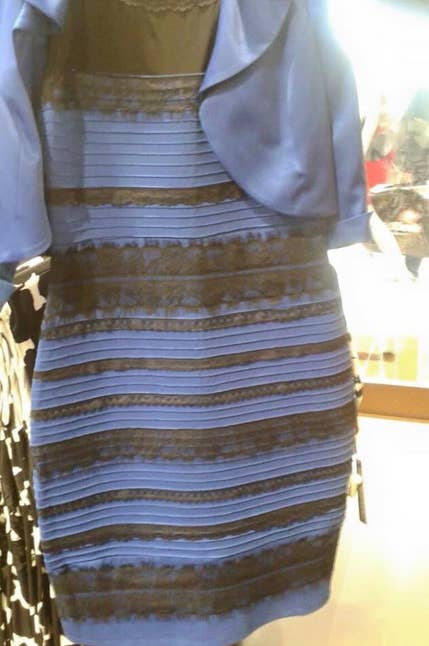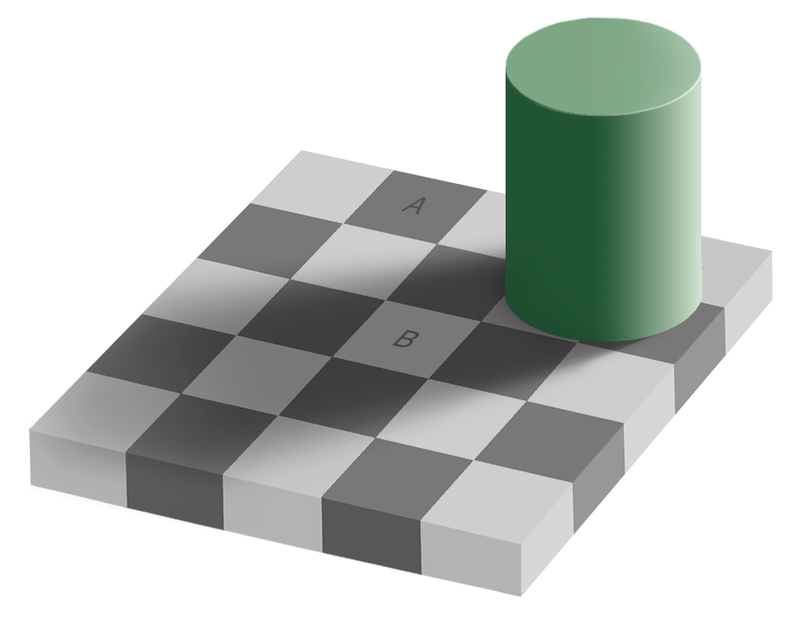This photo of a dress has caused an internet uproar: Is it blue and black, or white and gold?

You can take our poll here. So far, about three-quarters of respondents see white and gold.
But why are people seeing such wildly different colors? First off, it's not monitor settings. (My husband and I looked at the same monitor and saw different colors.)
It's probably not about the cells in your eyes.
Our retinas have specialized cells called rods, which are used for night vision, and cones, which deal with color. But these cells are probably not the source of the dress dilemma.
"I would say it is highly unlikely that it is a difference between cones," said Cedar Riener, associate professor of psychology at Randolph-Macon College.
Cones come in three types: red, blue, and green. And each of us has very different ratios of these types. But the different ratios "don't seem to have a big impact on our color vision," Riener said. "I could have a 5-1 ratio of red to green cones, and you could have 2-1, and we could both have similar color sensitivity."
It's about how your brain is interpreting the light coming into your eyes.
"We are always making decisions about the quantity of light that comes into our retina," Riener said.
This light, called luminance, is always a combination of how much light is shining on an object and how much it reflects off of the object's surface, he added.
"In the case of the dress, some people are deciding that there is a fair amount of illumination on a blue and black (or less reflective) dress. Other people are deciding that it is less illumination on a white/gold dress (it is in shadow, but more reflective)."
This is just like the famous Adelson checkerboard optical illusion. In the image below, square A is exactly the same shade as square B, but they look totally different:

The dress phenomenon, according to neuroscientist Dale Purves of Duke University, "shows how strongly people are wedded to the idea that colors are properties of objects, when they are in fact made up by the brain."
OK, but why do different people's brains interpret the light differently?
Our vision is heavily influenced by so-called "top-down" processing, John Borghi, a cognitive neuroscientist at Rockefeller University, told BuzzFeed News. Top-down processing "begins with the brain and flows down, filtering information through our experience and expectations to produce perceptions."
Each person brings a different set of experiences and expectations, as well as attention levels and particular eye movements.
For example, what you looked at just before you looked at the dress could influence the way your brain perceived it, Borghi added. "It could also be that you've seen dresses (or fabric) with the same texture or shape before, which could also affect your perception." This general phenomenon is called priming.
Interestingly, scientists don't know much about individual differences in perception, Riener said.
"The individual differences tend not to receive as much attention from perceptual researchers, since we focus on how eyes work in general," he said. "And in general, our eyes work very similarly, since we all live in an environment where the color of the light is generally the same shade of blue."
